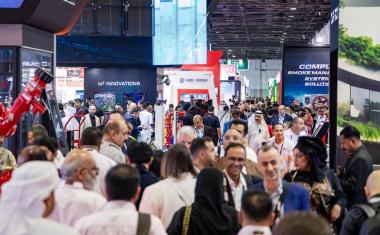Increased Security Measures at French Rail Facilities
The installation of security screening equipment on the Thalys high-speed service between Paris and Lille in northern France was in the wake of the recent violence in the region, i...
The installation of security screening equipment on the Thalys high-speed service between Paris and Lille in northern France was in the wake of the recent violence in the region, including the attacks on satirical magazine Charlie Hebdo. The Thalys train from Oignies to Pas-de-Calais France was also equipped subsequent to the most recent attacks at the Bataclan and other locations in Paris. The decision to install passenger screening equipment at these rail facilities by December 20, 2015 was implemented on schedule and could have a ripple effect throughout the region, as the Schengen agreement comes into question, resulting in more demand for explosives, weapons and contraband detection equipment (EWC).
Despite the current threats to passenger rail systems in Europe there have been no widespread installations of passenger screening equipment within the Schengen Zone countries to date. Currently the only rail service requiring passengers and their baggage to be screened is the United Kingdom’s Eurostar system, which lies outside the Schengen Zone, but provides regular service to member countries.
This does not appear to be the beginning of “airport-style” security at rail stations, and Europe’s rail stations will not adopt this style of screening, for the following reasons:
- More than three billion passengers travelled by rail in Germany, France, and Belgium in 2014, compared to more than 1.7 billion traveling by aircraft throughout Europe. The sheer number of rail passengers makes it difficult to impose airport-style security in the rail industry.
- The number of rail stations far exceeds the number of airports in Europe. In Germany for example, there are only 33 large airports, but there are 122 main rail stations. The cost to install, maintain, and monitor checkpoint screening equipment at the major German airports is immense and the cost to provide the same level of security at German rail stations would be higher still.
- There are 5,417 railway stations in Germany, ranging from large international hubs to small, rural platforms. The prospect of installing security screening equipment at only category-one rail stations, which are central hubs or intersections of important railway lines, is a daunting prospect. Based on the average selling price of baggage and parcels x-ray equipment ($99,775.00) and walk through metal detectors ($2,164.00), if the 21 largest stations in Germany each had five security checkpoints with one baggage and parcels x-ray machine and one walk-through metal detector, the total cost for equipment alone would be $10.7 million.
Although the recent installation of screening equipment in France addresses the threat of possible attacks against the Eurostar and other high-speed trains, the majority of rail passengers travel via commuter trains, with thousands of unoccupied platforms. Furthermore, the current deployment format of screening equipment at rail stations only addresses the threat of an attack on the train itself and not the railway station. There are few secure areas at rail stations, and creating such areas would require significant reconstruction of most main stations, which makes the large-scale adoption of security checkpoint equipment at European rail stations an unlikely prospect.














